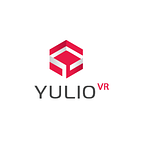The Top 4 Reasons Why Oculus Go is Making VR for Business More Practical
As all of know, Oculus Go — the much anticipated ‘all-in-one’ headset was released, and it’s set to revolutionize mobile VR as we know it. In fact, the Oculus Go has already been rumoured to be the best selling quality VR headset of 2018 despite it only being available for purchase for 8 months of this year! It’s targeted to outsell Samsung’s Gear VR (590,000 units), Sony’s PlayStation VR (1.47 million), Oculus’s own Rift (120,000), HTC’s Vive (170,000), Microsoft’s Windows Mixed Reality (120,000), and Google’s Daydream View (50,000) this year which is an insane amount of traction for this headset! But can we blame everybody for investing?
The largest selling point is that there’s no phone required, no awkwardly trying to fit your phone inside the goggles and hoping it’s secure, no cables to entangle you... Just… go.
Trending AR VR Articles:
1. How XR Can Unleash Cognition
2. Oculus Go, the Nintendo Switch of VR
3. Expert View: 3 ways VR is transforming Learning & Development
And that’s the intended magic of VR, isn’t it? Put on this headset and go anywhere. The Oculus Go was available to order as of May 1 2018, and it only costs about $200 USD. That’s pretty exciting when you consider that a Gear VR from Samsung, the current best in class mobile experience is around $100 but requires a high-end smartphone to make the magic happen.
There have been plenty of articles floating around that discuss the consumer benefits of the OGO, but what about the benefits for those who can see immediate ROI? Let’s look at the four reasons why Oculus Go VR is going to be the key to making your business a VR success.
1. You get the emotional connection of VR without all the hassle of preloading
VR’s power to forge emotional connections has always been why it is so interesting. The problem to date has been that it sometimes gets lost in cumbersome technology — what I would call ‘friction’. In the past several years of experimenting with VR technology, and more than 1000 hours of user testing, we’ve seen small things like an unwillingness to mess up hair and makeup with headsets, concern about looking foolish and concern about feeling nauseous all limit VR’s reach. And we’ve seen the current multi-step process — download an app, put content on your phone, put the phone in a headset — impede business adoption.
2. The headset is powerful enough to stand on its own (and not draining your own phone battery)
The ‘smartphone as engine’ model has some inherent problems in current mobile VR that Oculus Go VR takes care of nicely. Right now, if your sales team is using VR in the field with their own phones, the experience can be interrupted by incoming calls or text alerts. And if their phone battery is at low because of this morning’s conference call, is an interior designer going to risk using it in VR at a client presentation? Standalone, purpose-built devices not only take away the friction of loading the right app and getting it going before placing it in a headset, but also take care of these small but very real inconveniences.
3. It makes fast VR, even faster — and more personal
For VR to be a practical, everyday tool, I maintain that is has to be fast. It’s a tool to facilitate discussion, and I advocate a ‘pop in and out’ experience. Look inside the headset at a design problem or issue to be resolved with your client or prospect, and then have a discussion. Oculus Go is going to contribute to that ‘fast VR’ use case that I think is critical to business-ready VR. Simpler, pre-loaded VR experiences on the headset make the designer, marketer or even retailer the narrator of a story, and not someone facilitating technology like phones and apps. It helps you get into VR faster, and I’ve seen, many times, how transformative that is. It’s the difference between seeing something and being immersed inside it.
4. You don’t need to blow the rest of your paycheck on the device that powers your headset
Another obstacle to business VR is perceived cost. You’ll see articles all the time explaining that the Gear VR or the Google Daydream are just $100. But they need phones which are $550+ to power them. As a business owner trying to arm salespeople with VR portfolios, or installing these devices in retail environments, there’s a lot of risk for breakage, damage and loss. But with Oculus GO VR, marketers and sales manager will be able to get 3–4 devices for the same budget.
It’s a cornerstone of our approach to VR for business at Yulio that the technology should never be a burden to a business user. You should be able to use the tools and processes you’re already using to bring your story into the VR medium. Oculus GO VR is another step toward making that seamless, and has the potential to propel VR storytelling for business in late 2018.
